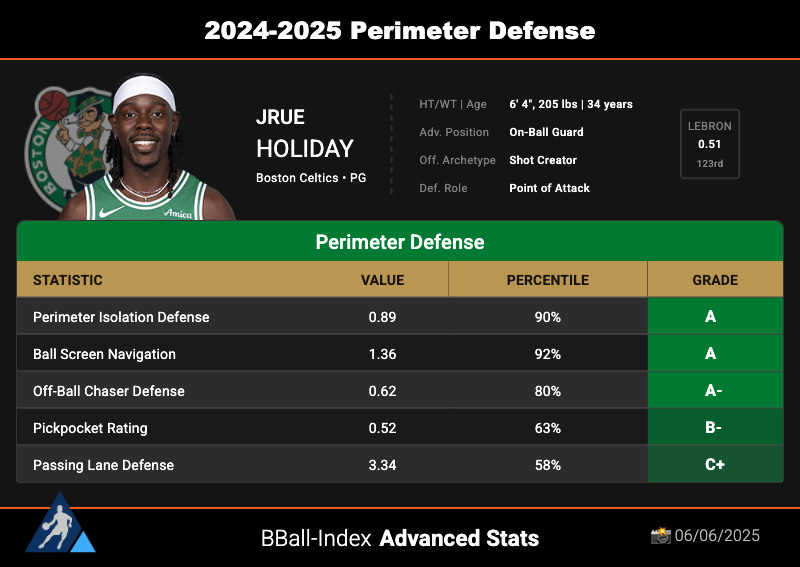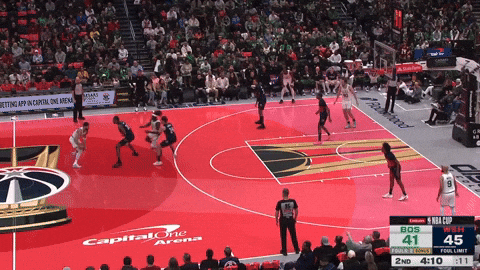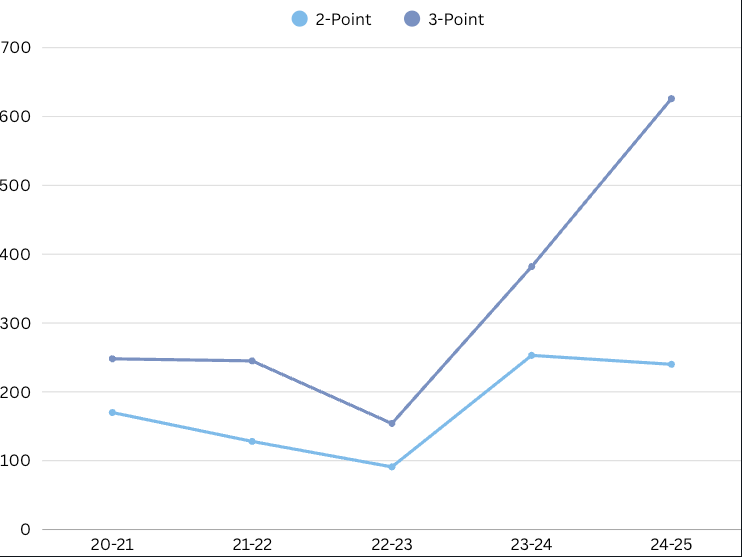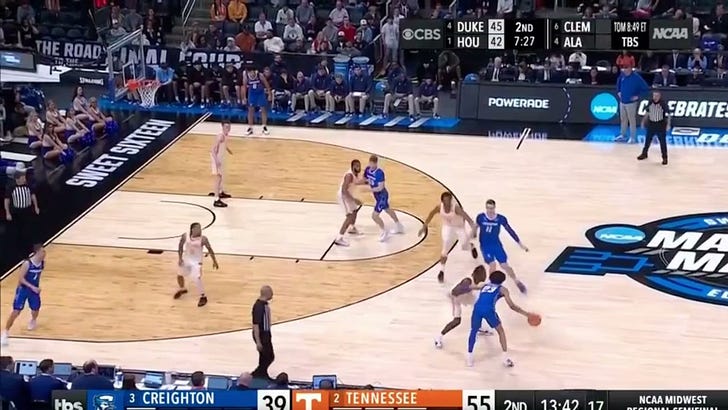The Boston Celtics’ season didn’t end as we hoped it would. We came into the basketball year with dreams of watching the team repeat. Dreams of seeing Jayson Tatum and Jaylen Brown dispel a media narrative that stained the team’s celebrations last summer.
Alas, it wasn’t to be.
Injuries were the story of the season from start to finish. The roster never got fully healthy for very long. It wasn’t long ago that we were telling ourselves and each other that the starting five needed to get a run of games together, and everything would click.
Remember that?
Unfortunately, that run of games didn’t come. Instead, even as the Celtics fought tooth and nail during the playoffs, guys were in and out of the lineup. And then, that happened — Tatum went down — and with him, everything changed.
We will have more than enough time to dissect how Tatum’s injury has (potentially) altered the Celtics’ approach this summer; in truth, that one moment against the New York Knicks will anchor the decisions we see play out between now and the trade deadline next February.
For today, though, we’re casting our minds to the games and events leading up to that horrible moment and allowing them to blur into one specific thing: a grade for how each player performed throughout the season.
Today, we look at the guards; tomorrow, the forwards and on Sunday, the Bigs.
Let’s begin.
Jrue Holiday: B+
The number one storyline with Holiday this season was how his magic touch from the corners had evaded him. He went from shooting 60% from the corners last season to 30% this season. That drop off was a huge blow to Boston’s spray offense, especially early in the year, where they were looking for Jrue on those actions.
To put this into context, Holiday was in the 98th percentile from the corner three during Boston’s championship year. He was in the 7th percentile this past season.
Those struggles hurt. They hurt bad.
However, Holiday still brought a whole lot to the table. He remains one of the best perimeter defenders in the NBA. He can guard every position one through five, and allows Boston to cross-match when playing dominant bigs or forwards.
He also ranked among the best perimeter defenders in multiple key categories, including screen navigation and isolation defense — two of the most important parts of Boston’s point of attack system (as they are with every team, of course).
On offense, Holiday’s shooting struggles forced him to grow in prominence as a short-roll threat, both as a scorer and playmaker. Oh, and who can forget the impact he made whenever he found himself working out of the dunker spot.
Holiday is the type of player that ties everything together, even if his numbers aren’t popping out of the boxscore the next morning.
Even when his shooting is off, Holiday brings a wealth of upside to the Celtics’ rotation. His versatility (on both sides of the floor) is an invaluable asset, especially in terms of a contending roster. So, while his shooting numbers dipped, and his health was patchy throughout the year, he was still one of the team’s better performers.
If he has to go this summer, it would be tough watching him connect everything for another team. Still, you can’t take away the impact he’s had over the last two years. He deserves his high rating for this season.
Derrick White: A
If Holiday gets a B+, then White gets an A. He was more consistent, genuinely looked like a third option for large stretches of the year, and defended with competitive aggression every night.
White’s overall three-point volume took a sharp upturn this season. He went from 490 attempts in 2023-24 to 681 attempts in 2024-25. Yet despite such a bigger shot diet, he continued to shoot consistently, dropping from 40% to 38% regardless of the increased volume.
White took 408 shots off the catch this season, with it being likely that almost all of them were from deep. He shot a 63.3 eFG% on those attempts, thus proving his value as an off-ball weapon capable of squeezing all the juice out of Boston’s star gravity and off-ball spacing.
Outside of shooting, White was also a highly valuable playmaker, getting elite marks across a host of different metrics that measure the effectivness of a players’s on-ball creativity and shot-creation for others. Here’s a breakdown courtesy of the Basketball Index.
And that brings us to the defensive side of the ball, where one specific aspect of his game stands out above all else…his blocks.
White ended the regular season with 80 blocks. According to NBA Stats, that ranks him third among guards in that category, one spot ahead of the 2025 MVP, Shai Gilgeous-Alexander, and behind Amen Thompson and Peyton Watson of the Denver Nuggets.
There’s something about watching White trail a play before exploding for a last-second block that just feels…right. His perimeter defense, screen navigation and ability to stay locked in when contesting in the rearview provide vital funneling when he’s beat off the bounce or via a screening action. Couple that with his point-of-attack work, and you’ve got an incredibly valuable defender on your hands.
White, to me, is one of the Celtics’ most important players — arguably top three — and should be a lock to still be part of the rotation next season. Of course, you can never say never.
Payton Pritchard: A
SIXTH MAN OF THE YEAR.
I could leave it right there if I wanted to.
Pritchard took the most shots of his career this season, and somehow, he kept his effective field goal percentage skyrocketing to a career high of 62%.
Pritchard came into the season having spent the summer working on his pull-up shooting. He took 300 pull-up shots, with 230 of them coming from deep — converting at a 39% clip.
Suddenly, Pritchard wasn’t just a catch-and-shoot threat anymore. Now, he could cook off the bounce and use that threat to punish defenders who pushed up too close; there’s a reason why he took a career-high 120 shots at the rim this season, finishing in the 90th percentile among guards for accuracy, having dropped 75% of his shots.
Pritchard is a genuine sparkplug off the bench. There were multiple games throughout the season where he changed the momentum, or completely took control (what were your favorite ones?). I had him as the leading 6MOY candidate for most of the season.
Year after year, Pritchard has found ways to add to his offensive game. I’m at the point where if he needed to have a prolonged spell in the starting lineup, I wouldn’t bat an eye. He’s certainly one of the better bench guards in the league, and could easily spell minutes as a starter.
Still, as you likely noticed, I have yet to touch on Pritchard’s defense. Not because he’s a bad defender — he actually fights his ass off, and rarely gets exposed when team’s try and target him — but because that’s not where his value lies.
I chose the above clip to highlight some of Pritchard’s defensive instincts. I had this labeled as “good sink defense.” Pritchard reads the drive, and rather than trying to pressure the ball-handler, he sinks into the paint to meet the drive where it’s going, forcing the ball-handler to pick up the rock and try to Euro through traffic.
It’s the type of defensive movement that is subtle and rarely spoken about, but can create high-upside events such as a highly contested shot that was never intended to occur.
Pritchard deserves his A this year. He’s such a genuine baller.
Baylor Scheierman: C+
I’ll keep this one short and sweet.
Scheierman struggled his ass off when shooting the three-ball this season — especially earlier in the year. At times, it looked like the game was flying by at a million miles per hour.
However, when he got his chance later in the year, he started to show his upside. Some of his passing was reminiscent of Jason “White Chocolate” Williams.
How fitting was it that this dime came against the Kings? Kind of like an NBA call-back, right?
Anyway, Scheierman flashed his upside as a playmaker, rebounder and scorer. Everything we broke down in his scouting report at the start of the season began to shine through.
Scheierman will need more reps at the NBA level before we can have a true evaluation of how he fits on the roster long-term, or what areas he can improve on moving forward. Still, the early signs are encouraging, and I genuinely think he can earn minutes off the bench next season.
Considering he had a tough task of trying to crack a championship rotation, I think he did the best he could with the opportunities he was given. A full offseason and a potentially larger role next season should do wonders for him.
***Some side notes***
I have purposely left JD Davison off this list. I didn’t watch enough G League basketball to have a fair take on his MVP-level performances or how he could translate to the Celtics roster. Giving him a grade would have been disingenuous on my part.
Yesterday, I noted how I would be doing these grades by starter, bench, etc. However, I thought it would be a better exercise to break them down by position — hence the change.
That’s everything for today! Catch you all tomorrow!













Completely agree on D White. Our 3rd most valuable player overall, after JT and JB.
In addition to everything he brings on the court, I just love watching him play. He makes it fun, which is surely what watching your team is all about.
If jrue is traded I wouldn’t mind see 🅿️🅿️ getting the starting job, I’d also be intrigued to see if JD gets some type of run this upcoming season since they signed him to an official deal. And a hopeful maybe Baylor scheierman can be that Prichard/hauser role if he continues to show promise. Great work Adam‼️